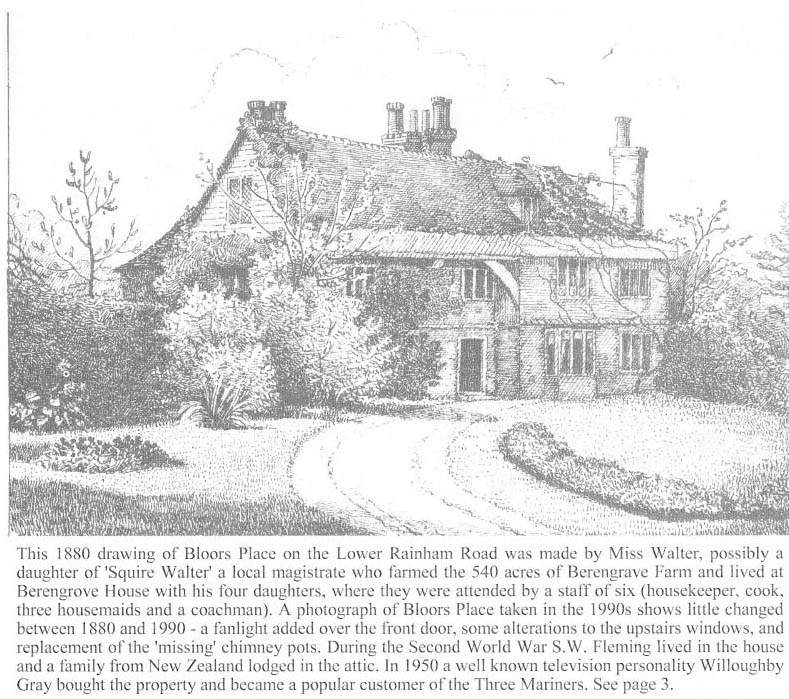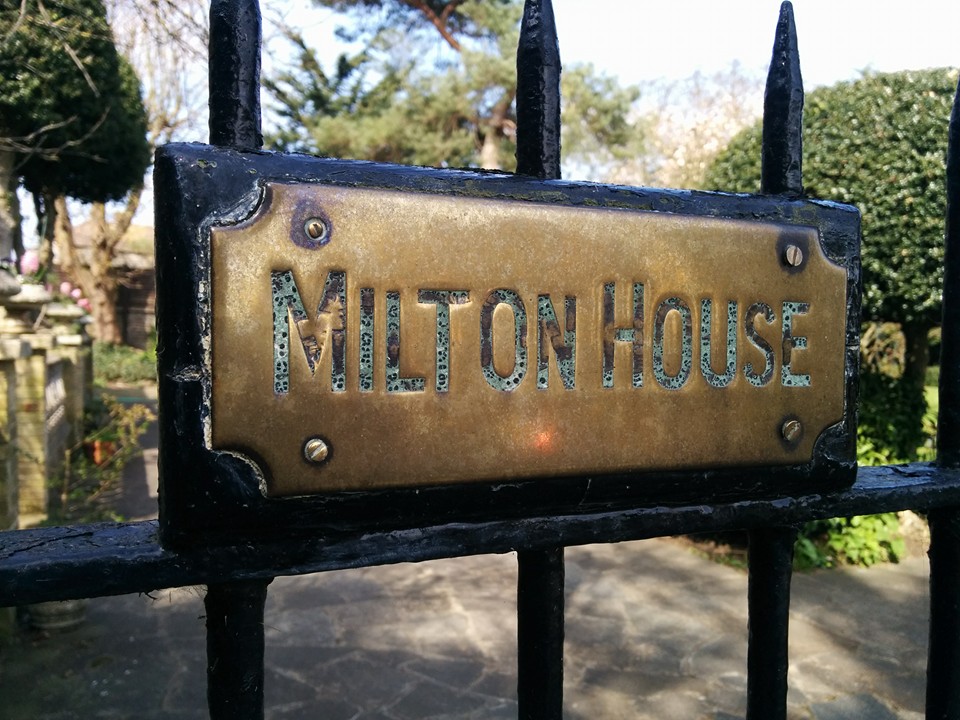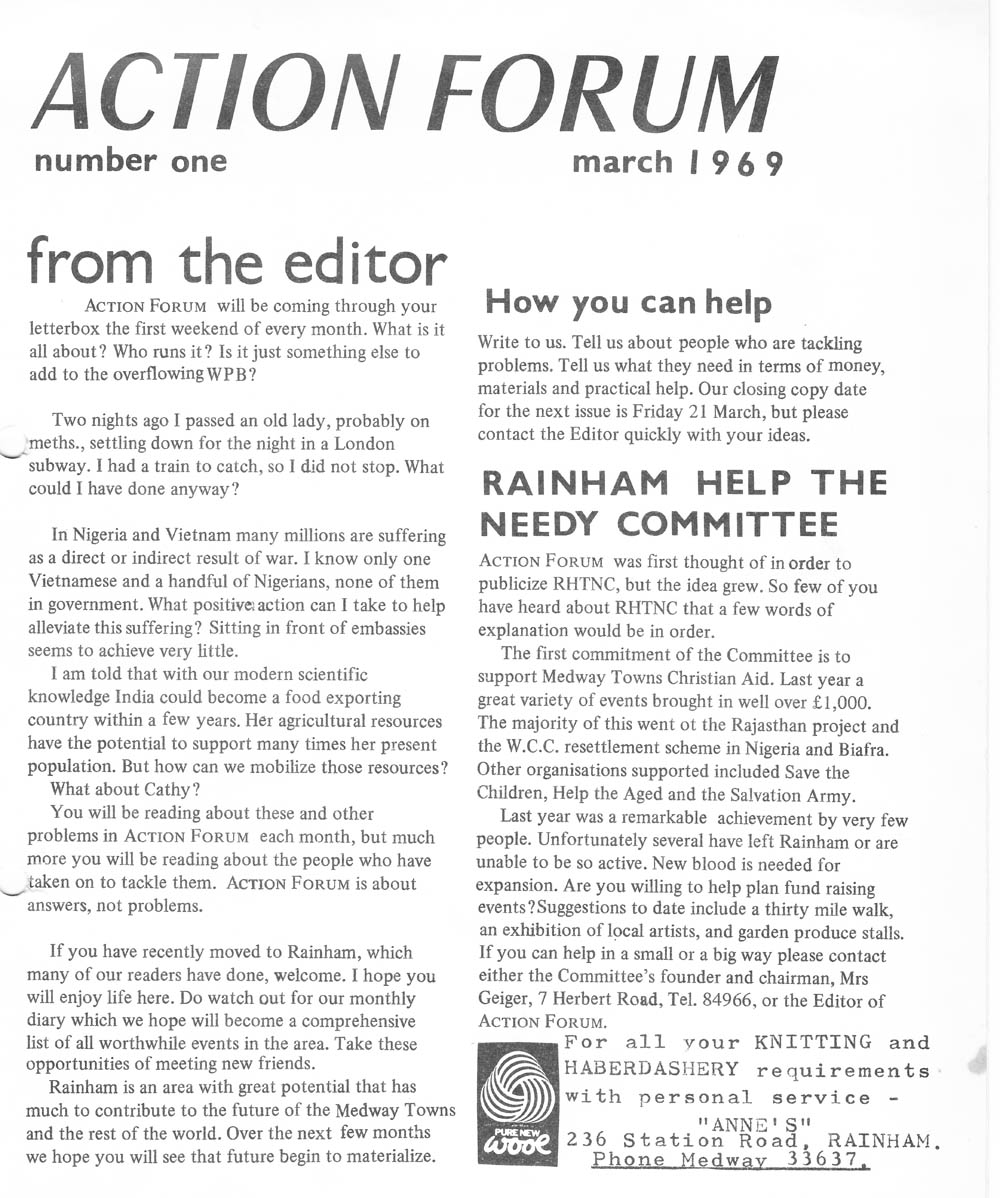My family lived in Rainham from 1946 until about 1976. I was 8 when we arrived and remember the place vividly as it was until I drifted away at the age of 13, first to go to school in Rochester, then university, then overseas. My sister Mary was 1 when we moved in, and my other sister Susan was born during the severe winter of 1947 which got Rainham in its grip as everywhere else. We lived first in 93 Broadview Avenue near the Church Path, then 73 Orchard Street opposite the boys’ school. My family were not therefore ‘natives’ of Rainham. We came there because my father was in the Royal Marines and spent his last 5 years of service in Chatham. It is worth recalling that at this time the Medway area was dominated by the navy, the dockyard and the industries and firms which supported it. The place was full of sailors, marines and dockyard ‘mateys’, the arrival of some of whom in search of a more pleasant rural life-style accounted for Rainham’s growth in the pre- and post-war periods.
As other people have noted on this website, Rainham was then still essentially a village surrounded to the east and south by orchards, hop gardens, fields and woods. The beginnings of suburbanisation had begun on the Gillingham side with the development of two ‘new’ (actually pre-war) areas, one bounded by the A2, Hamilton Road, Nursery Road and Maidstone Road, the other – on the other side of Maidstone Road – made up of Tudor Grove, Broadview Avenue, Herbert Road and (the incomplete) Arthur Road. The war had stopped all this in its tracks, but it was, of course to start up again with a vengeance in the 1960s.
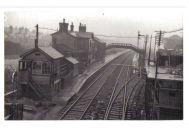
At the beginning our lives were focussed on the village. At first, I went to St Margaret’s C of E Primary School at the top of Station Road. This was a substantial two-storey building of brick and flint with a tree in the grounds and concrete steps outside leading to the upper floor where the senior pupils were taught by the headmaster. Mr Turner. Below, the infants and juniors were taught, first by the wonderful Miss List (who used to send someone out on Friday afternoons to buy the latest edition of Enid Blyton’s ‘Sunny Stories’ from which, to our delight, she then read stories about elves and fairies. As we progressed, we were entrusted to the more formidable but still likeable Miss ‘Fanny’ Evans. One thing I remember vividly was the daily arrival of crates of free, very cold milk in tiny bottled with fascinating metal tops, which we drank through straws. I went to the Sunday School too, and was taught by Mr Denis, an admirable and devout man, heavily tanned and with a broad accent who was said to be the captain of a Medway barge. He provided the music for the hymns with his squeeze box. I think he was the brother of the Mr Denis who ran the butcher’s shop just down Station Road. The vicar, Mr Jordan, turned up occasionally. I don’t remember him that well: but I remember vividly his tiny grey coloured, Austin seven car.
Thinking of the butcher raises another matter. The immediate post-war period was a time of real austerity. No-one had any money, we all looked shabby and everything was rationed. Every Saturday morning, I remember, Mr Denis’s butcher’s boy would arrive on his bike with a basket on the front containing the tiny roll of beef (called hilariously ‘the Sunday joint’) that we were allowed, and which had to last for ages. A result of this was that every back garden was devoted to growing vegetables or soft fruits, and had chicken runs or rabbit hutches to supplement the food supply. We had six Rhode Island Reds which gave us eggs and the occasional Xmas dinner. Chicken in those days was a rare luxury – not the cheap common-a-garden meat it is today. My memories of the local sweet shops (notably for me, Parker’s - just round from the bottom of Orchard Street) were coloured by this. They may have been full of delights, but in my day what we could buy was rationed and when, to our delight, sweet rationing was abolished (1950 odd) the demand was so great that they had to put it on again! There was no central heating either. Even when you could get enough coal or wood to keep the fire going, I regularly used to wake up of a winter’s morning with ice on the inside of my bedroom window! Rainham was also the site of my first real disappointment in life. During the war bananas had been impossible to get and the news that they were to be available again produced joy and enthusiasm. I remember standing in Orchard Street when a friend suddenly produced this strange looking yellow thing – so unattractive and different from the exotic and succulent delicacy of our imaginations. We didn’t know what to do with it. Eventually we realised we had to peel it: but even them we were unimpressed and couldn’t work out what all the fuss had been about.
As everyone will tell you, we had to make a lot of our own amusements. There was no TV (a few sets only appeared in the middle 1950s) but we made the most of the wireless, listening mostly to comedy programme’s like ‘ITMA’ and ‘Much Binding in the Marsh’ and Wilfred Pickles’ popular quiz show: ‘Give ‘em the Money Barney’ he would say as he dished out the equivalent of 10p to the lucky winner. Not like now. Working the radio wasn’t that easy. Our set was powered by rows of big square glass containers of chemicals called ‘accumulators’ which presumably produced electricity and were linked to the set by complex wiring. We weren’t submerged in 24 hour sport and entertainment like today and things such as the Boat Race, the Grand National, the Test Match, the Boat Race and the Cup Final were significant national events which we all looked forward to.. Apart from the Coronation, the only time I saw TV was to watch the Boat Race and the Blackpool-Bolton Wanderers Cup Final when Stanley Matthews finally won his cup winners’ medal. By contrast to Wayne Rooney, Matthews probably earned about £10 a week.
For us children, there was plenty to enjoy. We used to go down to the Chalk Pit in Berengrave Lane to find newts and come back with sticklebacks and tadpoles in jam jars. There were the wonderful Rainham Woods to play cowboys and Robin Hood in: they seemed huge and started just south of the fields near Arthur Road and filled the space between Wigmore and Jack Clark’s farm and hop gardens in Meirscourt Road. For entertainment, there was Saturday morning pictures for kids at the Royal Rainham – the famous Bughutch – where, when not charging about the aisles and yelling our heads off to the despair of the manager, we enjoyed a diet of westerns, cartoons and historical epics like ‘The Sea Wolf’ and ‘The Four Feathers’. In the summer and autumn there were the delights of scrumping for apples, cherries and plums. At that time there was nothing but orchards, fields, fruit trees and sheep east of the Church Path, which ran from the eastern end of the churchyard up past the end of Tudor Grove, Broadview Avenue and Herbert Road then across a scruffy bit of waste land with damson bushes to the Woods. Summer Sundays brought idyllic afternoons watching Rainham Cricket team in their spectacular tree-surrounded pitch in Berengrave Lane. Then, in the evenings we had the pleasure of lining the A2 opposite the Cricketer’s to jeer at the Londoners in cars and coaches who were crawling back through the village bumper to bumper after a day trip to Margate. Autumn brought the conker season (the best ones were obtained by throwing sticks into the horse chestnut trees in front of the church) and Guy Fawkes day. Always misty, we used to let off bangers, squibs, roman candles and rockets in our back garden then go to the huge ‘formal’ bonfire which had been built on nearby waste ground. Ours was in the space where Arthur Road ended. There were also the attractions of the 20th Medway (Rainham) Scout troop. I joined for the glamour of the uniform and the ten gallon hat which I wore in the style of cowboy idle, Roy Rogers. The scout hut was near the gate of the cricket ground. I don’t remember doing much but learnt how to do lots of useful things with rope and string.
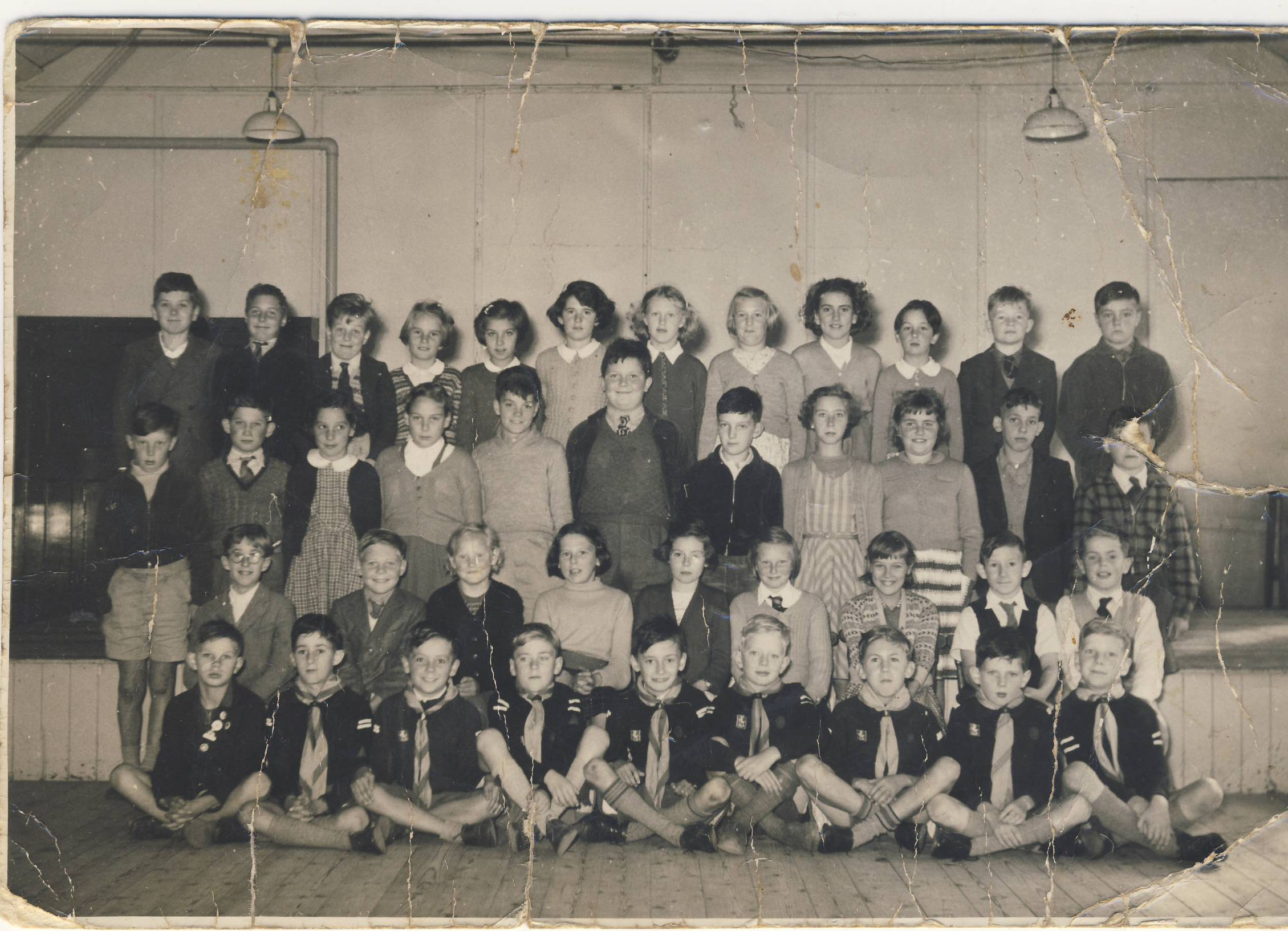
Class at Camp School 1953
A significant event occurred in 1947-8. The population of Rainham must have been growing, so the powers that be decided to open a new primary school in Maidstone Road (on a rise just opposite Highfield Road). I and, I imagine all the children who lived in the area south of the main road in the ‘pre-war’ developments, were moved from the C of E Primary School to the new one. It was called the ‘Camp School’ because it occupied the timber huts and facilities of an old army camp which was on the site. Its playground was a bit of rough pasture close to Rainham Woods. The first Headmaster was nice Mr Rivers who had been involved with military music in the war and had managed to get hold of a battered set of brass instruments – so we had a complete school band. We gave concerts – one of which I and my fellow cornetist, John Norris, messed up by playing ‘John Peel’ so fast that the others could not keep up. Another of Mr Rivers’ obsessions was Gilbert and Sullivan. One concert was devoted to excerpts from ‘HMS Pinafore’ with myself singing Sir Joseph Porter. Other memorable teachers were Mr Burroughs (smart in tie, green jacket, beige cavalry twill trousers and shiny brown boots), Mr Palmer, and Mr Smith – a sardonic type whose teaching technique had been learnt when he was a Physical Training Instructor in the navy and hadn't changed. He always referred to the ground as ‘the deck’ and called us ‘Boy!’
I enjoyed the Camp School but I don’t think it did much for the social cohesion of Rainham. At that time every British community seemed to be filled with petty snobberies and imaginary or real social gradations: most streets contained people who thought they were better and posher than those in the next. Early soaps (like Coronation Street and East Enders – before broadcasters developed the idea that neighbourliness was about crime and confrontation – were all based on these tensions.. Thus we who lived in the largely semi-detached prewar developments south of the Main Road tended to look down on the more working class inhabitants who lived in the terraces and housing estates between the Main Road and the railway; while looking up with awe at the middle class office workers who lived in the detached residences and bungalows up Maidstone Road and around Wigmore. Now Rainham had three primary schools catering separately for each group! The Camp School obviously benefitted from this more privileged clientele and there were some very bright little girls like Sheila Marriot and Laura Something who were mad on ‘Swallows and Amazons’ and insisted on being called ‘Susan; and ‘Titty’ after the heroines of that work. Not knowing - in those days of innocence - what these words actually meant, we obliged. We boys were more interested in ‘Ripping Yarns’ of British pluck against shifty foreigners written by people like Percy F Waterman.
There were also a number of squatters still living in the more remote bits of the old camp. These were people who had been bombed out in London or the Medway towns during the war and had moved into the first empty property they could find. At the Camp School gate lived one such family called Pickering who had a boy who was a fellow pupil. His grandfather lived with him and we were thrilled (having just seen ‘The Four Feathers’ at the Bughutch) to learn that this old man had actually been in the thin red line at the Battle of Omdurman outside Khartoum in 1898 when Kitchener had defeated the Sudanese and avenged General Gordon!
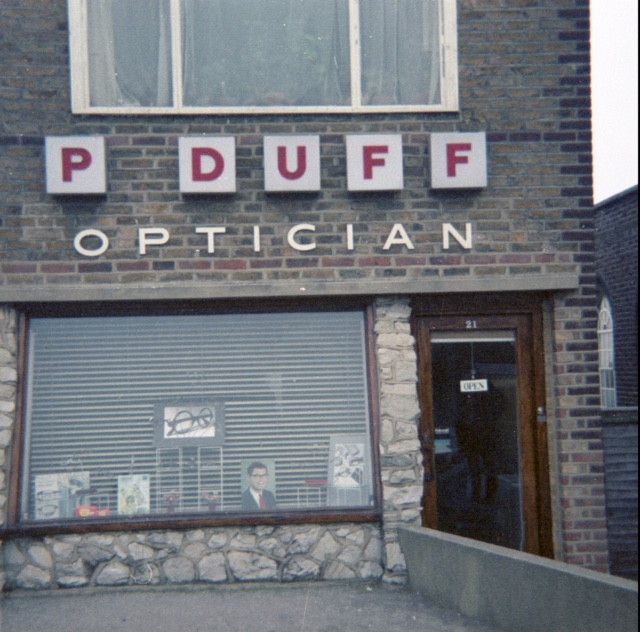
It was at the Camp School that they discovered I was short sighed. I have worn glasses ever since, and my first pair was supplied by Patrick Duff who had just opened a practice on the rise past the Post Office and Ivy Street. Mr Duff was youngish and pleasant with a grey suit and a little moustache. In fact he looked and dressed very much like the Reed brothers who ran the barber’s shop next to Cremer’s and Rainham Radio and opposite the Bughutch. The brothers wore suits and had little moustaches and hair gleaming with Bryllcreme. They bore a strong resemblance to Private Walker in Dad’s Army (though without the spivery.) Both had been captured outside Dunkirk and had spent the whole of the war in German prison camps. I remember that, between the snip-snips, they regaled us with stories of crossing Germany in cattle trucks and being told by confident guards what they intended to do to Mr Churchill when they successfully invaded Britain!
The different social circumstances of the three Rainham primary schools however were not reflected in the results. Strangely, hardly any boys from the area passed the 11 plus examination and we all found ourselves at the Secondary Modern School in Orchard Street. In those days, of course, the state education system was divided into three parts – the Grammar schools which took the academically gifted who were destined for ‘professional’ jobs at the age of 11; the Technical Schools (filled by another selection process at 13) which prepared for middle grade engineering and technical careers; and the Moderns which the rest attended, the majority destined for ordinary working class jobs.
I must admit that to have ‘failed’ the 11 plus examination was a source of some shame – especially when we met those who had passed wearing their smart Grammar School uniforms. Theoretically therefore, the Orchard Street Secondary Modern should have been ‘bog standard’ and bottom of the educational heap. But I can say most emphatically that it was not. Obviously it taught non-academic subjects like woodwork, metalwork, mechanical drawing, book binding, pottery and gardening – indeed I have been grateful for the grounding it gave me in these practical skills ever since – but academically (in the A streams at any rate) what was taught and the way it was taught was little different to what took place in (for example) the Mathematical School in Rochester. (I know this because I was transferred to it at the age of 13) The only real difference was that at Rainham we did not do languages. Likewise the whole tone of the school was disciplined and purposeful. The Headmaster, Mr RAF Bacon MSc, ran it like any ‘normal’ secondary school, was treated with enormous respect by all, and set the tone by walking the corridors dressed in his academic gown. He was strict and there was always the cane in reserve for delinquents. Not that there were many of those: I have little recollection of bullying or rowdiness.
Mr Bacon was supported by a team of teachers, many of whom had just left the forces or had recently graduated. Mr Brown, the Games Master, had been in the navy in the Med and had a large metal tag on his key ring stamped ‘Commander’s Cabin’; the two teachers of metalwork (I forget their names) had both been RN Engine Room Artificers; Mr Castell had been in the RAF; Mr Springall had been in the Royal Marine Band. The last taught music and ran the school choir. He was a keen Salvationist and was Bandmaster to the Salvation Army Citadel in Gillingham. I remember him taking the choir there where we sang ‘All in the April Evening.’ Other memorable teachers were Ernie Rotherham, a short north countryman who taught pottery and book binding; the perpetually relaxed Bert Newall who did art; and Mr Patterson who taught us gardening. He was very devout and ran a bible reading group which I joined (shamefully in order to be able to wear the little green enamel badge with a silver lamp on it which all members were given). He later left to become a missionary in Uganda. On the more academic side, here was Percy Johns, red faced and tweedy, who introduced us to history; while English was the preserve of two University of Wales graduates and brothers, Rhys Williams and Haydn Williams, both of whom were tall and thin and rode huge ‘sit up and beg’ bicycles. There were class trips too – all by bicycle. One was to Sharp’s Toffee Factory in Maidstone (the sweet smell put us off confectionary for weeks) and another all the way to Canterbury. I returned with two old cavalry sabres which I had bought for the equivalent of 25p each tied to my crossbar.
When I went to school in Rochester I gradually lost touch with Rainham. I got home late and had to leave home early to catch the bus (either the green Maidstone and District number 26 - Faversham to Gravesend - which went past my new school but trailed all round Gillingham; or the Brown Chatham Traction Co. number 2 which went down Chatham Hill but only went as far as the Town Hall). And at the weekend I was obsessed with homework. In the holidays however I was still around and, like many people in Rainham and district spent the summer working on local farms (in my case Jack Clarks’). There were cherries, apples and plums to be picked and hops to be gathered. Local families went together to the many hop gardens in the area and had a three week paid holiday in the fresh air picking them. This involved working their way slowly along rows of hop plants, standing as they pulled the bines down from the wires on which they grew, then sitting to pull off the hops and heap them in huge bins made of sacking. The quantity picked (and the amount earned) was checked, and the bins emptied regularly. My father and I worked as ‘Pole Pullers’, in charge of a dozen rows of hops (and the families who were picking them) and equipped with a twelve foot pole with a knife at the end. Our job was to make sure the pickers did not hide the smaller hops (payment was by volume) and to cut down any bines which got stuck at the top of the wire. Some of the women in the hop garden were a pretty rough lot and, as a young male teenager I came in for a lot of banter and lewd innuendo replete with suggestions about what I could do with my pole which had nothing to do with hops. Hops were waxy with a distinct smell which could not be easily removed. For weeks we just stank!
Brian Vale






















































































































































